#CosmicHorror
Explore tagged Tumblr posts
Text
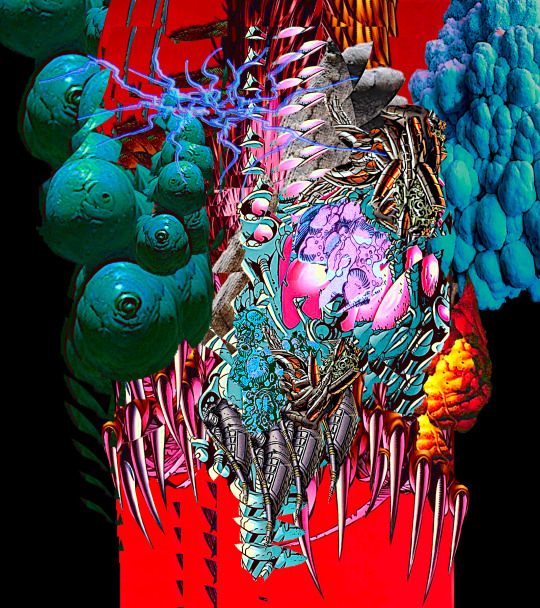
___
.
.
.
62510226111
knop / 11korp
#abstracthorror#cybernetics#cybergrind#cyberpunk#cosmichorror#kgoth#cybergoth#anticosmic#outsiderart#alien#mutant#weird#horror#scifi#glitch#abstract#noise#eyestrain#harshnoise#deathmetal#blackmetal#albumcover#coverart#posterdesign#netlabel#posthumanism#posthuman#chaosmosis#knop#11korp
144 notes
·
View notes
Text
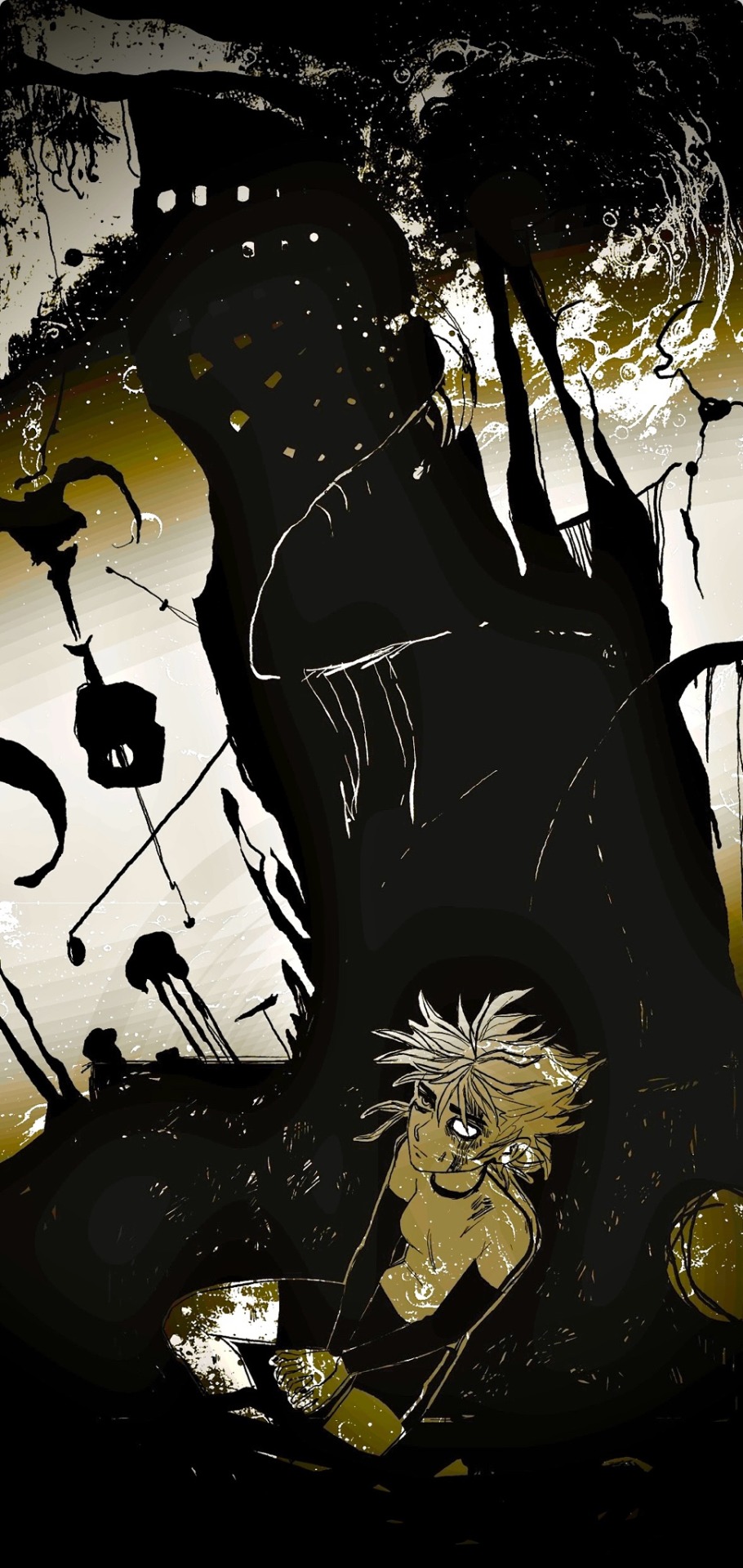
PINTVHORROR
119 notes
·
View notes
Text
youtube
Hello!! I am Sucre Amygdalum, a trans lesbian writer/musician/artist, and I am developing a surreal original RPGmaker horror game "In The Liminality". Here is the teaser trailer for this game, and some notes!! - This game is a psychological/cosmic horror game with mature themes. It is not intended for children and contains strong gore & body horror along with other sensitive themes. - It follows Su, a 16-year old autistic pre-transition trans lesbian, assisted by an esoteric enby entity, Myg on a surreal journey of growth and healing - Explore 24+ levels, each weaving intricate sets of lore into an ever-expanding tapestry - Surreal and unique characters such as - Lucille, the teenage embodiment of the abyss that speaks in fluent brainrot - Rosie, the beloved autistic cis lesbian girlfriend of Su - and VANAC, a transfeminine biomechanical alien matriarch. - Lobert the alcoholic bisexual blue lobster - The most transgender game ever made, probably - The most lesbian game ever made, most definitely - The most autistic game ever made, absolutely - A wide variety of artstyles - photography, hand-drawn sketches, pixelart, and art in various styles is mashed together. Including surreal aliens illustrated by artist C. M. Kosemen I expect this game to release sometime in the back half of this year. Please feel free to share it if you are interested!!
#intheliminality#liminality#horror#rpgmakerhorror#rpgmakergame#gamedev#horrorgame#lesbian#translesbian#wlw#yuri#gametrailer#2025#girls love#gl#cosmichorror#psychologicalhorror#eldritch#cosmic#psychological#indie#indiegamedev#Youtube#in the liminality#rpgmaker horror#rpgmaker horror game#game development#horror game#trans lesbian#transbian
39 notes
·
View notes
Text
"The Chronicles of Forgotten Light"
Chapter One: The Council of Echoes
---
The Council chamber was a marvel of ancient and modern architecture, a sacred space that seemed to
exist outside of time. High vaulted ceilings, soaked in centuries of history, were adorned with glowing
runes that pulsed with life, responding to the thoughts and emotions of the beings gathered below. Soft
golden light streamed into the room from crystalline spheres that floated in the air, shifting colors in
tune with the mood of the discussion.
Representatives from across the galaxy had gathered in this hall��beings of incredible diversity, each
one embodying the unique beauty and power of their race. Tall and luminous, Ethereal beings seemed
to shimmer as they moved, their garments ranging from simple robes to intricate, ornate attire, each
bearing the emblem of their status. Alongside them stood warriors with bronze skin, wisps of smoke in
humanoid form, and metallic creatures that glinted in the light, all coexisting in a delicate balance.
Despite the importance of the topics being discussed, the atmosphere in the chamber was thick with
the weight of bureaucracy—a slow, creaking machine of deliberation that had long lost momentum. The
Council was mired in debates over trivial issues that could quickly wear down even the most patient
listener.
Dundul Kron sat in his seat, his gaze drifting over the assembly, but his thoughts were far from this hall.
His restless mind sought escape from the monotony. And as often, he slipped away to another place,
far removed from the noise and tedium.
With a deft shift, he connected to the collective unconscious and, with just one leap, transported
himself to a bar, leaving the assembly behind. His decisions would be recorded and documented
regardless; why waste energy on being present where the only task was to select the distinctive feature
of a specific model, or to decide why it should have a particular color, with periodic rescan for
additional functions that enhance the model’s ability to perform its assigned tasks?
In this other reality, everything was sharper, more vivid. Here, there were no debates, no endless
discussions, only peace and harmony. The bar where Dundul had transported himself was located on
the rings of Saturn, a place that epitomized tranquility and seclusion, far from the bustle of the galaxy.This bar, hidden among billions of icy and rocky particles, offered a breathtaking view of the planet's
rings, slowly streaming through the vastness of space. It was called "On Saturn's Rings" and was the
embodiment of what could be called the perfect place for those seeking quiet and solitude away from
the chaos of the universe.
The interior of the bar was simultaneously cozy and futuristic, with floor-to-ceiling windows that allowed
guests to gaze out at the endless expanse of Saturn and its famous rings. Beyond these windows, like a
river of time, the distant stars slowly drifted by, creating a sense of eternity and calm.
Tables and chairs, made of soft yet sturdy materials, were arranged so that each visitor could enjoy the
panoramic view. The lighting in the bar was subdued and soft, emanating from neon tubes that gradually
changed color depending on the time of day and the mood of the patrons.
The bartender, seemingly an extension of the bar itself, effortlessly mixed drinks that seemed to absorb
the atmosphere of the place. Each cocktail served here was more than just a drink; it was an entire
universe of flavors and sensations, adjusting to the emotions and thoughts of those who consumed it.
This bar was the place where one could come to ponder important decisions, immerse oneself in
reflections on life and the universe, or enjoy a moment of silence in the vastness of space. For Dundul, it
was the perfect place to meet her—a place where time slowed down, allowing him to focus on what
truly mattered.
Meeting with Sophia was what truly mattered now. She was a beacon of calm in the storm of his
thoughts, her presence a reminder of the beauty that lay beyond the confines of duty. Her deep,
understanding eyes met his gaze, and a soft smile played on her lips as she voiced the question that had
been lingering in her mind.
“It’s fascinating how you understand things as if you’re seeing through layers of reality,” she began, as if
continuing a thought out loud. “I had a strange feeling during my last work. It was as if my brushes were
painting not by my hand, but by someone else’s. Is this what you talk about—the unconscious?”
“It’s similar to what Jung would call ‘the projection of the unconscious onto matter,’” Dundul replied,
smiling slightly. “Perhaps your brushes weren’t guided by your hands but by archetypes hidden deep
within your subconscious. They might manifest through you, as if you were a conduit for their energy. Do
you feel them influencing you?”She pondered this, her gaze drifting to the rings of Saturn outside the window.
“Yes, but it’s a bit unsettling. It feels like there are two forces within me: one striving to express
something I can’t understand, and the other trying to maintain control. Have you ever felt that?”
“Often,” Dundul responded calmly, his voice deep and assured. “It’s the eternal struggle between
consciousness and the unconscious. The second force is your ego, trying to maintain order. But to
achieve true harmony, we must learn to listen to both sides. Have you ever tried talking to these forces
as if they were living beings?”
She nodded slowly, her face lighting up with understanding.
“Talking? I’ve never thought of it that way. But you’re right, they do seem alive. How would you suggest I
begin such a dialogue?”
“Try entering a state of light trance, when you’re on the edge between sleep and wakefulness,” Dundul
suggested, his voice nearly a whisper, as if he were sharing a sacred secret. “In that moment, you can
visualize these forces. Imagine them as figures with whom you can converse. Ask them what they want
to tell you, and listen. You might be surprised by what you hear.”
She looked at him, her eyes once again meeting his gaze.
“I’ll try. It seems like this could be an important step toward understanding what’s happening inside me.
Thank you. I feel a bit more at ease knowing you’ve been through something similar.”
Dundul smiled gently.
“We all go through this, it’s just that not everyone realizes it. I’m glad I could help. Remember, this is a
journey to your true self, and only you can define what it means.”
Their conversation flowed effortlessly, a natural exchange between two souls connected by a deep
bond—a love that transcends the physical, a union rooted in mutual understanding and respect. They
didn’t need words to express it; their shared presence was enough.But as Dundul began to speak again, he felt a familiar tug at the edge of his consciousness. The Council
chamber was calling him back, its sluggish discussions demanding his attention. He blinked, and the
serene landscape outside the bar window faded, giving way to the grand hall filled with beings from
across the galaxy.
He straightened in his seat, realizing that his brief mental escape hadn’t gone unnoticed. The speaker at
the podium had paused, his eyes fixed on Dundul with an expression of curiosity and something else.
The room had fallen silent, all eyes turning toward him. Misael, a figure known for his rare but impactful
interventions, stood at the edge of the gathering, his gaze locked onto Dundul.
Dundul sighed inwardly, preparing to re-engage with the discussion. But before doing so, he allowed
himself one last thought of the woman in the bar and the utopia they both knew—she was so close.
— And don’t forget to stay with me, he thought to himself. — The journey has only just begun.Chapter 2: The First Artifact
---
‘‘Introduction and Familiarization’’
Dundul was stationed at an ancient archaeological site located in one of the most remote corners of the
galaxy. This forgotten outpost, which once served as a hub for studying ancient civilizations, was now
engulfed in silence and oblivion. Centuries had passed since the last scientist left these walls, leaving
behind only dust and ruins.
But recently, the station had once again attracted the attention of researchers. Strange energy surges
detected in this region indicated the presence of something unusual, possibly linked to ancient artifacts
that held the power and wisdom of long-lost peoples. Now, with the station becoming a focal point of
interest once more, Dundul had arrived to unravel the mysteries hidden deep within.
This life-sustaining planet had become the subject of investigation due to its unique position and
complex history. Once, Salt III had been part of a great civilization, but now only ruins and enigmas
buried beneath its surface remained. The shift in the planet's axis in the past had led to climate
changes, making it similar to Earth, though with a less polluted atmosphere.
Salt III was surrounded by a massive ring system, reminiscent of Saturn's rings, but with a mystical
touch, as if the planet itself was encased in ancient artifacts. These rings, encircling the planet, created
a mesmerizing spectacle in the night sky, giving everything around a sense of mystery and eternity.
The station was built many centuries ago on the ruins of an ancient city, which may have been one of the
centers of the vanished civilization. The station's main dome, constructed from a durable and nearly
invisible energy material, provided protection from harsh external conditions and allowed the station's
inhabitants to observe the majestic rings shimmering in the night, evoking a feeling of peace and
oblivion.
The planet's terraforming process had begun, but it was interrupted for unknown reasons. Outside the
dome, the atmosphere was still unbreathable, though its composition was slowly changing. A complex
life-support system artificially maintained a favorable environment inside the station. Biomes, where
rare plants were cultivated, played a crucial role in oxygen production. These domes resembled vast
parks filled with diverse flora and fauna, where both exotic plants and rare animals thrived. Thesebiomes not only sustained life on the station but also served as a reminder of nature's vitality, despite
being far from their home worlds.
Around 50 people lived on the station — archaeologists, engineers, biologists, linguists — each a
specialist in their field. They formed a diverse group, gathered from across the galaxy for a single
purpose: to unravel the mysteries of ancient civilizations and use their knowledge to understand the
present and future. The researchers lived in compact modules connected by a system of corridors that
provided easy access to various excavation zones and research centers. Though small, these modules
were designed to create a cozy atmosphere and foster a sense of camaraderie. However, some
preferred to live in townhouses located in the park zones of the biomes, where they could enjoy solitude
and the tranquility of nature.
Despite the harsh conditions, the station became a place where a sense of camaraderie thrived. Those
who lived and worked there became like family. In such extreme conditions, mutual support was not
just a necessity but the foundation of survival. Here, on the edge of the galaxy, amid cold wastelands
and ancient ruins, unique human bonds were formed, built on trust, mutual aid, and a common goal.
In the evenings, when the workday ended, the station's inhabitants often gathered in the central hall
beneath the main dome. There, they discussed their discoveries, shared thoughts, and told stories of
their home worlds. These moments were essential for maintaining morale and fostering a sense of
unity. Dundul, though lost in his own thoughts, could not help but feel the powerful energy emanating
from these people. Their dedication to their work and to each other inspired him to achieve new heights.
At the same time, especially for the sensitives, the station's atmosphere was imbued with a sense of
mystery. Every corner, every ancient mechanism seemed to hold secrets, waiting for their time to be
revealed. Dundul, with his innate ability to delve into the essence of things, could not help but feel this
tension, this call from antiquity that echoed in his mind.
But he needed to complete routine tasks before he could unravel these mysteries. Scanning debris,
analyzing energy fields, checking the operation of old mechanisms — all these were part of the work
that needed to be done to prepare the station for further exploration. These moments, filled with
monotony and sameness, seemed especially dull against the anticipation of what might be discovered
next.
Dundul wandered the station slowly, lost in thought. To him, artifacts were more than just ancient
objects. He understood that their true power lay not in their physical shell, but in what they symbolized.
An artifact had meaning only to the one who created it, and only in that person's hands did it hold truevalue. In Dundul's view, there was no difference between artifacts and totems — they were all merely
reflections of their creators' inner worlds.
Yet despite his skepticism about material objects, Dundul knew that they could be the key to unraveling
deeper truths. Each artifact held a piece of history, a fragment of knowledge that could shed light on
current events. Runes, though merely symbols to him, could still contain hidden power, capable of
opening doors to new understandings.
Immersed in these reflections, Dundul continued his work, preparing for the upcoming quest that
awaited him. With each step, he felt the station's mysterious energy becoming more palpable,
foretelling an inevitable encounter with what lay hidden in its depths.
The scientific team assembled to study the ancient artifacts on Salt III soon faced unforeseen
challenges. Initially, everyone worked in unison, striving to uncover the secrets of this enigmatic planet.
Still, as time went on, internal harmony began to unravel under the pressure of ambitions, fears, and the
unseen influence emanating from the ancient relics.
‘‘New Discoveries’’
The first signs that the station was on the verge of great discoveries came unexpectedly. Routine scans
conducted on the surface and deep within Salt III began detecting powerful energy surges. Initially, they
were dismissed as equipment errors or natural phenomena, but over time it became clear that these
were not random spikes. These energy anomalies were too regular, too powerful, and too purposeful.
Dundul, responsible for this sector, gathered the team to analyze the new data. It soon became evident
that the sources of these surges were located in the ancient ruins, deep beneath the planet’s surface.
Analysis showed that these surges were linked to something more significant than simple artifacts —
possibly to the awakening of a consciousness of an ancient civilization that had been dormant for
centuries in the depths of Salt III.
The more the researchers delved into their study, the more it seemed that their actions were themselves
the catalyst for this awakening. The terraforming process, which had been interrupted millennia ago,
began slowly resuming. The planet's atmosphere became cleaner, more stable; the domes that
protected the station started to disappear as if the planet itself had decided to reveal itself to its new
inhabitants.However, the joy of such discoveries quickly darkened. Along with the awakening of ancient systems,
strange and disturbing phenomena began to occur on and around the station. Researchers started
encountering mysterious visions and indistinct shadows wandering the station’s corridors. These
entities seemed not to belong to this world but were closely tied to Salt III’s past. Some researchers
claimed to have seen fragments of the past, scenes of ancient battles and destruction now coming to
life before their eyes.
On Salt III, everything seemed calm and predictable at first glance, but each day spent on this planet
brought the researchers closer to uncovering what was happening on a much deeper level. The energy
surges detected by the instruments were just the tip of the iceberg, signals that something ancient was
awakening. Initially, Dundul and his team treated these as ordinary anomalies, but over time it became
clear that they were dealing with something that could not be ignored. The awakening of the ancient
mind was not driven by malevolent intent but rather a result of ancient forces striving to return the
planet to its original, paradisiacal state.
The energy enveloping Salt III was like a massive wave that swept through space and time, and with
each wave, it grew stronger, causing changes on the planet and within the researchers themselves. This
energy began to influence people's behavior, not with the aim of harming them but as a natural process
aimed at purification and restoration.
The planet’s power manifested itself subtly, covertly. The ancient mind of Salt III did not seek to control
people directly; instead, it guided them through its energy surges, creating conditions in which they
were forced to act. Each energy impulse was a message, a riddle that needed to be solved. But to do so
required not just strength, but a deep understanding that every action had its consequences. Like an
experienced ruler, the planet did not reveal its intentions, forcing those around it to act under conditions
of uncertainty.
Salt III acted through its energy surges and influence on the researchers' consciousness, compelling
them to make decisions and take action rather than merely discussing possible options. The energy of
the ancient mind awakened hidden emotions, fears, and ambitions within people. These surges were
not aimed at destruction; rather, they forced people to confront themselves, their inner demons, and
shadows. Nature sought not to destroy but to awaken the dormant power within each individual, forcing
them to act and thus cleanse themselves.
‘‘Memories of the Past’’: As Dundul immersed himself in his work, he increasingly noticed that strange
visions engulfed his consciousness. These visions were fragments of the planet's past, where ancientcivilizations performed their rituals, connecting with the forces of nature. The visions did not just come
to him; they took hold of him entirely, immersing him in the atmosphere of a distant time when artifacts
were not relics but living, active sources of power.
In these visions, he saw ‘‘Platunus’’
— a planet that was once full of life but became a victim of its own
technology. He observed how the ‘‘Temple of Energy’’ became a center of birth and death, how energy
meant for creation turned into a destructive force. These visions were so realistic that Dundul
sometimes could not tell where reality ended and illusion began.
‘‘The planet’s awakening’’ became increasingly apparent. Salt III, like Platunus, could become a victim
of its own power if it was not managed properly. But this power did not seek to destroy its new
inhabitants — it sought to restore the planet to its former glory. Dundul understood that their actions
needed to be aimed at maintaining balance, that any wrong move could lead to disaster. And though
they longed to uncover all the secrets of this land, they also realized that their mission required special
caution and respect for the forces they encountered.
With each passing day, more intense changes occurred on Salt III. The disappearance of the domes
opened new horizons for the researchers, but also brought new challenges. The awakening of ancient
spirits and entities connected to the planet’s past became a new reality for those who remained at the
station. These entities were not malevolent, but they could not fully interact with the planet’s
inhabitants without creating discomfort and fear.
These spirits were a mixture of memories and entities, gathered into a single consciousness that tried to
reconnect with the physical world. They were nothing more than archetypal shadows trapped in the
collective unconscious, attempting to restore a lost connection with reality.
Salt III, like a king, demanded respect and understanding from those who dared to step on its surface.
The planet did not forgive mistakes, but it did not seek revenge. It wanted to restore its grandeur, and for
this, it was necessary to understand its needs and goals. Those who could act consciously and with
respect had a chance to see the planet bloom again, returning to its paradisiacal state. But those who
could not handle its powerful energy were doomed to become its victims.
The researchers and Dundul found themselves at the center of this process. They had to act like wise
rulers, maintaining a balance between power and respect for the planet's force. They stood on the brink
of great discoveries, but every action they took could lead to either restoration or destruction. Salt III
demanded not only skill but also inner maturity to deal with the challenges it presented.Dundul understood that he and his team needed to become flexible, like water, to cope with the growing
challenges. They needed to act not just with strength but with wisdom, adapting to changing conditions.
Salt III, like an ancient teacher, tested the patience and adaptability of everyone who dared to enter its
sphere of influence. Like water, which always finds a way around obstacles, Dundul and his team had to
learn to navigate the invisible barriers the planet set before them. But these barriers were not meant to
stop them but to teach them to act with caution and wisdom.
With each new energy surge, with each new encounter with ancient spirits, Dundul's team increasingly
realized that they were not controlling the process but were a part of it. The planet dictated its
conditions but also revealed its secrets to those who were ready to listen and learn. The researchers
needed to become more than just observers — they had to become partners in the great restoration
process.
Salt III, despite its power and grandeur, did not seek to subjugate its guests. It sought to restore
harmony, and for this, it needed allies, not conquered slaves. To achieve this harmony, the planet
required them to have fluidity of thought, the ability to quickly adapt to new conditions, and a readiness
to change their perspective.
Dundul felt how he himself was changing under the influence of these forces. His own connection to the
collective unconscious grew stronger every day, making him more sensitive to the vibrations and
energies emanating from the planet. He realized that they were not just researchers on a mission but
participants in a grand cosmic plan that was only beginning to unfold before them.
It was this fluidity and adaptability that allowed them to avoid the traps and dangers that could have
destroyed a less flexible and dogmatic team. They had to remain adaptable in their approaches,
constantly adjusting their actions in response to the changes occurring on Salt III. The planet’s energy
could be both creative and destructive, and only those who could tune into its wavelength could truly
benefit from it.
Instead of trying to control the planet, Dundul and his team decided to work in harmony with its forces.
They stopped perceiving the energy surges as a threat and began to see them as signs and indications
that could lead them to uncovering the great secrets of the ancient civilization. This shift in approach
allowed them not only to survive but to thrive, gradually approaching the moment when Salt III would
fully reveal its deepest secrets.Salt III continued to change, and with it, so did those living on its surface. Their mission became not just
an exploration but a journey inward, a dive into the depths of their own consciousness, where the
answers to many questions they asked themselves lay hidden. They needed to become part of this
planet so that it could become part of them, and only then could they hope that everything they had
planned would lead to a successful conclusion.
Ultimately, the success of their mission depended not on how much they learned about the planet but
on how deeply they understood themselves in the process of this knowledge. Salt III was not only a test
of their knowledge and skills but also a test of their spirit, their ability to remain fluid, adaptable, and
wise in conditions that changed every minute.
So they moved forward, attuning themselves to the planet’s rhythm, merging with its energy, and
gradually uncovering the secrets it had kept for many centuries. This journey promised to be long and
difficult, but those who could adapt, who could become fluid like water, could hope that something
great awaited them at the end, something that would justify all their efforts and trials.
The scientific team, gathered to study the ancient artifacts on Salt III, soon faced unforeseen
challenges. Initially, everyone worked in unison, striving to uncover the secrets of this mysterious
planet, but as time went on, internal harmony began to crumble under the pressure of ambitions, fears,
and the unseen influence emanating from the ancient relics.
The Mystery of Artifacts and Their Influence
Energy artifacts revealed their true nature only in the hands of those connected to their creators. This
discovery was not just a scientific fact but a blow to the team's confidence. Some artifacts that had
previously seemed harmless, in the hands of those obsessed with their creators, became sources of
power. These individuals began to feel that they could control the artifact's power, but in reality, the
artifact was controlling them.
Artifacts discovered by the team on Salt III were unique in their nature and action. Each had specific
properties and could strongly influence the environment and even the researchers themselves.
However, as they delved deeper into the study of these objects, it became evident that the power of the
artifacts could have been more unequivocally beneficial. Some, like the ‘‘Misantreon’’ (named after an
ancient artifact capable of awakening the dark sides of human nature), began to sow discord and
mistrust among the team.
‘‘Misantreon’’
, an artifact emitting dark, almost imperceptible energy, was found deep within a ruined
temple and immediately drew attention. Its influence was invisible but palpable: as soon as one of thescientists began to study it, they began to feel inexplicable suspicions toward their colleagues, fear, and
a desire to possess the artifact alone. Initially, these changes were barely noticeable, but over time,
they grew into open conflicts.
Other artifacts, such as the ‘‘Crystal of Dawn’’ (functionally similar to the Resurrection Stone), emitted
a bright energy that promoted healing and restoration. However, its power was also ambiguous: the
crystal demanded sacrifices, as if hinting at the inevitable balance between light and darkness.
The ‘‘Crystal of Dawn’’
— a majestic artifact reminiscent of a lost civilization that may have used it to
revive or restore the deceased. But its bright aura hid a dark secret: every time someone tried to use its
power, they felt something slipping away in return, as if the crystal demanded sacrifices in exchange for
its action.
These two artifacts became the epicenters of conflict. Some scientists, obsessed with the idea of using
‘‘Misantreon’’ to uncover the secrets of the ancient civilization, insisted on further research despite its
obvious negative impact on the team. Others, on the contrary, saw in the ‘‘Crystal of Dawn’’ the key to
restoring harmony on the planet, although its dark sides caused no less concern.
Conflicts Within the Team
As tension within the team grew, two opposing groups began to form. One, led by Dr. Laren, believed
that the artifacts should be studied at all costs, even if it involved certain risks. Laren argued that
without a deep understanding of the artifacts' power, they could not uncover all the planet's secrets.
Her supporters believed that the risk was justified and that the knowledge that could be extracted from
the artifacts was worth it.
The other group, led by Dr. Iris, called for caution. They saw how the influence of ‘‘Misantreon’’ and the
‘‘Crystal of Dawn’’ was changing their colleagues' behavior and believed that continuing the research
could lead to catastrophic consequences. Iris and her supporters insisted that the artifacts should be
isolated and studied remotely to avoid their negative influence.
“We cannot afford to lose our sanity for the sake of discovery,” Iris said at one of the team meetings.
“These artifacts may hold not only knowledge but also destruction. If we’re not careful, Salt III will
become our grave.”
Meanwhile, the artifacts continued to exert their influence on the researchers. Each of them felt the
pressure emanating from the ancient relics. ‘‘Misantreon’’ heightened paranoia and distrust, makingpeople more closed off and aggressive. Some even began to see their colleagues as rivals rather than
allies, leading to open conflicts and quarrels.
The Influence of Artifacts on Consciousness
The influence of the artifacts on the researchers' consciousness became increasingly apparent. Visions
that initially seemed like mere illusions began to invade their reality. Some began to experience an
inexplicable fear of the artifacts, while others felt an irresistible attraction to them. These behavioral
changes intensified, leading to conflicts within the team. Dundul, with his natural resistance to such
influences, began to notice how his colleagues were slowly but inexorably changing.
The ‘‘Shadow of Power’’, an ancient staff capable of subjugating its wielder's mind, became the focal
point of such influences. One researcher, under its influence, began to see himself as a ruler striving for
power at any cost. These visions were so vivid that he began to perceive his colleagues as threats to his
future greatness.
The researchers realized that they needed to protect themselves and their team from the artifacts'
influence. They began creating protective gear designed to block the relics' effects on consciousness.
The team also started training to strengthen their inner resilience and concentration to withstand the
forces contained in the artifacts. Dundul, with his innate mental defense abilities, became a mentor for
others, teaching them methods of resisting ancient influences.
Chaotic Control
At the peak of the crisis, when ‘‘Misantreon’’'s influence reached its zenith, the team faced the greatest
danger. The energy released by the artifact began to break down the station’s defense systems.
Everything seemed doomed to fail. But those who remained sane knew that chaos could only be
controlled by embracing it. The team’s actions, which seemed chaotic and meaningless, were actually
meticulously calculated.
Even the most powerful protective measures could not fully shield them from the artifacts' influence.
When the incident with ‘‘Misantreon’’ occurred, the station plunged into chaos. The dark energy
released by the artifact began to spread at an unimaginable speed, like a living entity seeking to engulf
everything in its path. Everything happened so quickly that it seemed each moment teetered on the
brink of destruction.The team, gripped by panic, froze in terror at the unmanageable force. But those who remained
conscious immediately pulled themselves together. Without a word, as if by an invisible command, they
began to act. The intricate dance of interactions that unfolded at the station appeared chaotic and
unstructured to an external observer, but within this chaos, there was hidden harmony.
Every action was part of a complex plan, with each note played at the right moment. The entire team,
acting as one, began working, creating a symphony out of chaos. They knew they couldn’t fully suppress
‘‘Misantreon’’’s energy, but they could redirect it. At the moment of climax, the artifact was encased in a
protective field and transported to an indestructible vault. This step was necessary to save the station
and continue their mission.
When it was all over, silence reigned on the station. The researchers realized they had encountered
something beyond their understanding. But they also realized that the power contained within the
artifacts could be both creative and destructive. It was important not to suppress it but to learn to work
with it, respecting its nature.
Now they knew their mission was not just a scientific inquiry but a spiritual journey, in which they had to
find a balance between the thirst for knowledge and respect for the forces they were unveiling. Salt III
continued to hold its secrets, but now the team was prepared for new challenges, understanding that
their success depended not only on knowledge but on their ability to maintain balance between light
and darkness.
And only time would tell whether they could uncover all the mysteries of this enigmatic planet without
losing their humanity in the process.
“These artifacts,” Dundul said as the situation on the station began to stabilize, “can give us answers to
many questions. But they can also lead to our demise if we don’t learn to understand and respect them.
We must remember that the power hidden within them can be both creative and destructive.”
This incident was a turning point for the team on Salt III. The conflicts and disagreements that nearly led
to disaster showed how dangerous the misuse of the artifacts' power could be. The researchers
understood that their mission was not only about the pursuit of knowledge but also about maintaining a
balance between the thirst for discovery and caution.Salt III continued to hold its secrets, and each day brought new challenges. However, the team now
acted with greater caution, understanding that every action they took had consequences not only for
themselves but for the entire planet. And though they continued to strive to uncover the secrets of the
ancient civilization, they knew that their success depended on their ability to maintain unity and respect
for the forces they had encountered.
Thus, the station on Salt III became not only a place of scientific research but also an arena where
human ambitions and fears clashed with ancient forces awakened from a deep slumber. And only time
would tell whether they could uncover all the mysteries of this enigmatic planet without losing the most
valuable thing — their humanity.
#authors#mysteries#fiction#ScienceFiction#SpaceExploration#AncientCivilizations#CosmicMystery#PsychologicalThriller#AlienArtifacts#ArchaeologicalAdventure#TeamDynamics#PlanetaryExploration#SupernaturalForces#Terraforming#MysticalScience#CollectiveUnconscious#MindControl#DarkEnergy#TechnologicalRuins#CosmicHorror#AncientRituals#SurvivalInSpace#PowerStruggle
35 notes
·
View notes
Text
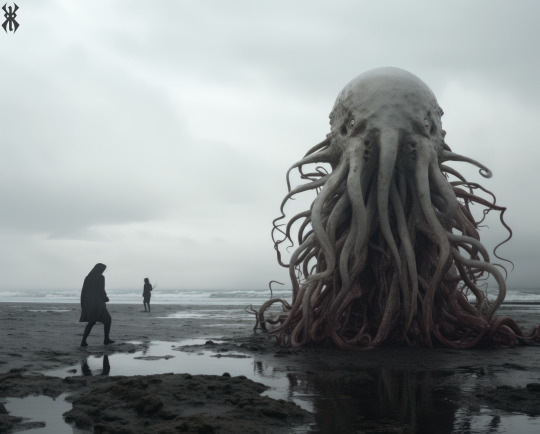
Officials warn to stay away from all beaches. Cthulhu nesting season is here.
#blindsquid#cthulhu#nestingseason#cephlopods#beachday#beachlife#conceptart#lovecraft#hplovecraft#horrorart#cosmichorror#oldones#innsmouth#horror#eldritchhorror#aiphotography
158 notes
·
View notes
Photo
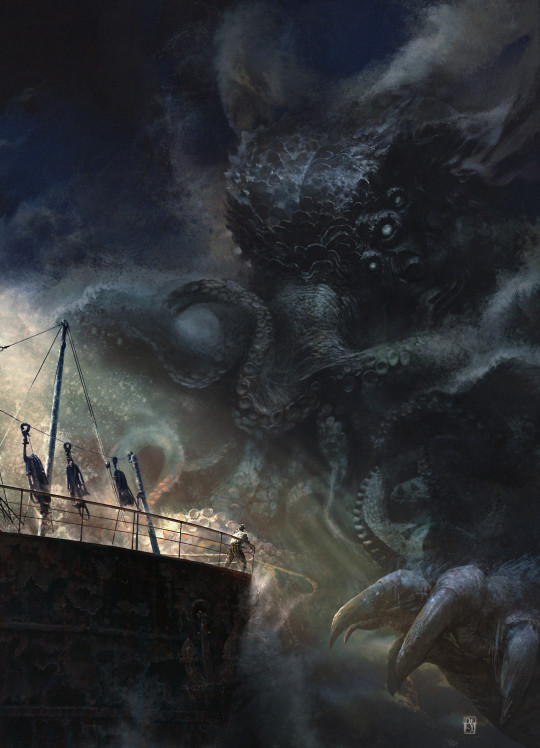
Cthulhu, by Antonio De Luca
#Cthulhu#HPLovecraft#WeirdTales#GreatOldOnes#CosmicHorror#HorrorArt#FantasyArt#Artwork#AntonioDeLuca
263 notes
·
View notes
Text
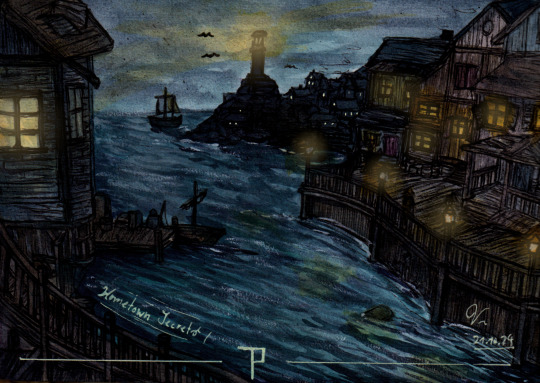
After our little trip to Arkham yesterday, we're off to Innsmouth today. Probably the most famous location in Lovecraft's stories after Arkham. Don't worry, I'll do something about the inhabitants in a later #prompt ;)
With today's Hometown Secrets, it couldn't have been more fitting.
Creeptober-Promptlist by @creep-tober
---
Wanna support your humble artist?
---
| Deviant Art | Ko-Fi | Patreon | Instagram | Bluesky | YouTube | Cara | IO |
#sea#horror#traditional art#gothic#callofcthulhu#cosmichorror#cthulhu mythos#h p lovecraft#innsmouth#landscape#lovecraftian#lovecraftian horror#scenery#shadow over innsmouth#day 19#inktober#creeptober#hometowns ecrets#artwork#Innsmouth
18 notes
·
View notes
Text
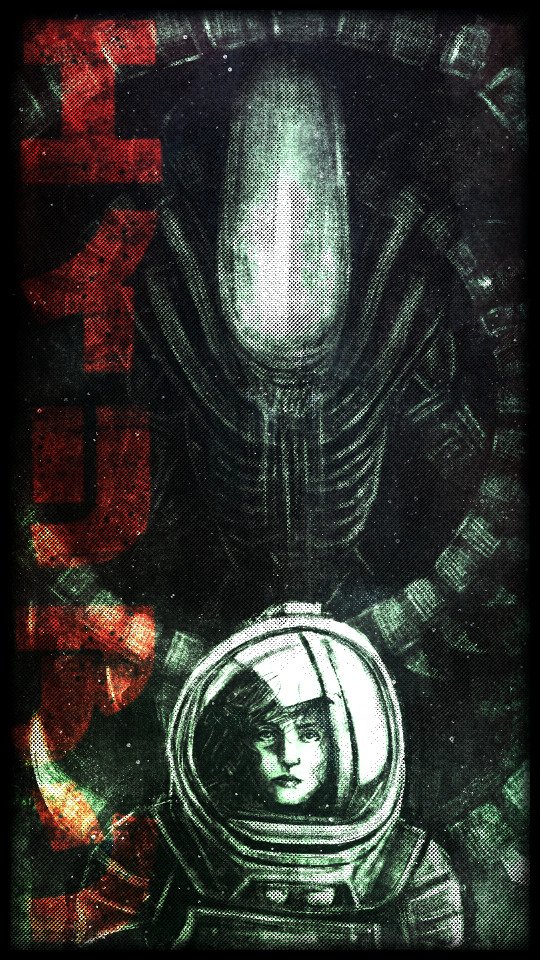
The perfect organism.
#alien#hrgiger#giger#ridleyscott#cosmichorror#lovecraftian#monster#creature#xenomorph#horror#ripley#sigourneyweaver#dark#space#scifi#poster#illustration#movie#clipstudiopaint#pulkitoki
39 notes
·
View notes
Text
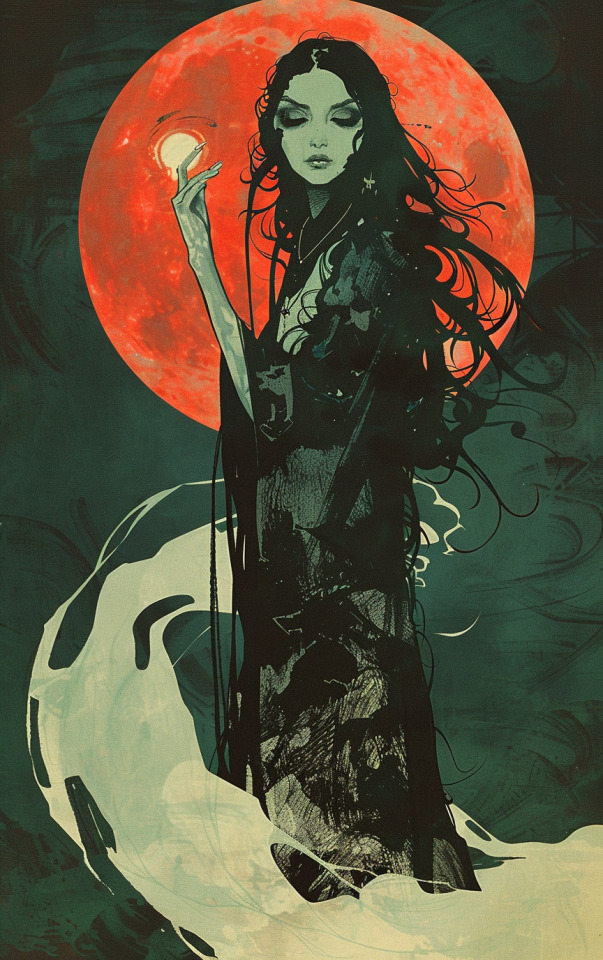
The Conjuring
8 notes
·
View notes
Text
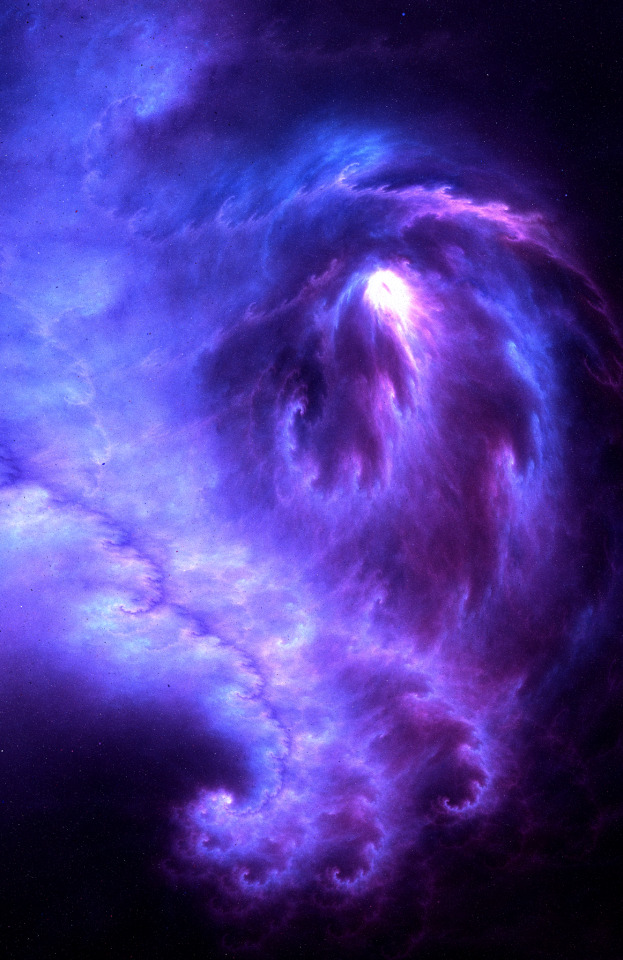
World eater.
#lovecraft#lovecraftian#lovecraftart#lovecraftianart#lovecraft art#lovecraftian art#hp lovecraft#digitalart#fractal#fractals#chaotica#fractalart#apophysis#art#saskatchewanartist#space art#space#spaceart#cool#magic#eldritch#eldrich horror#cosmos#cosmichorror#cosmic horror#abstract#surreal
18 notes
·
View notes
Text

___
.
.
.
63110113111
knop / 11korp
#abstracthorror#cybernetics#cybergrind#cyberpunk#cosmichorror#cybergoth#kgoth#anticosmic#outsiderart#alien#mutant#weird#horror#scifi#glitch#abstract#noise#eyestrain#harshnoise#deathmetal#blackmetal#albumcover#coverart#posterdesign#netlabel#posthumanism#posthuman#chaosmosis#knop#11korp
54 notes
·
View notes
Text




#art#biopunk#blacklight#bladerunner#conceptart#cosmichorror#cultist#cyber#cyberpunk#dystopia#fantasy#futurepop#futurism#futuristic#hybrid#illustration#neon#neoncore#next#popart#scifi#whatsnext#neomythology
5 notes
·
View notes
Text
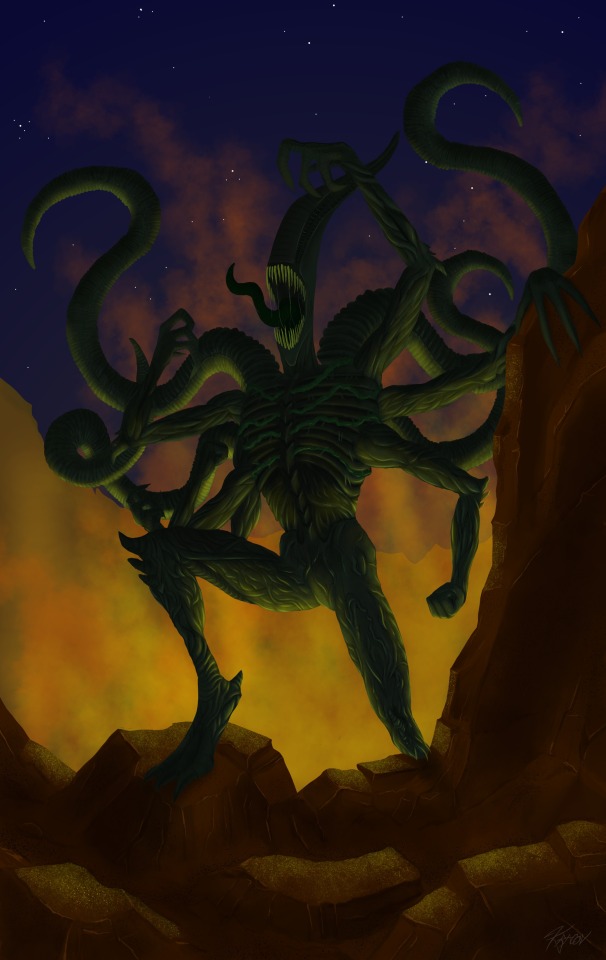
Nyarlathotep
#art#painting#artists on tumblr#demon#drawing#cosmichorror#hp lovecraft#lovecraft#nyarlathotep#god#outergod#monster#alien
27 notes
·
View notes
Photo

Cartas de locura y muerte desde el vacío - Rechinaba sus manos contra la ventana (on Wattpad) https://www.wattpad.com/1432317701-cartas-de-locura-y-muerte-desde-el-vac%C3%ADo-rechinaba?utm_source=web&utm_medium=tumblr&utm_content=share_reading&wp_uname=NecropolisAlfaOmega Relatos de horror de diverso tipo, legados escritos de seres condenados, recuerdos de ninguna parte o de lugares que no deberían existir. Aquí dejamos estos pliegos perdidos, a la espera de volver a existir. Lea, si cree estar preparado.
#alienigenas#aliens#colores#comet#cosmic#cosmichorror#cosmos#cuento#cuentos#dark#darkness#desesperacion#horror#horror-csmico#horrorcsmico#infeccion#invasin#oscuridad#oscuro#relato#relatos#tale#terror#terrorpsicolgico#books#wattpad#amreading
13 notes
·
View notes
Text

... ideal beach day ...
10 notes
·
View notes
Text




They watch you from the other side of the mirror…
So yeah, redesign of my oc I made for my diploma work ^^ I hope soon I will make concept art where you can see them better + from both sides :> btw, this art was made 2 YEARS AGO D: I know my upload consistency was shit but damn, quite a lot of time passed >.>
fun fact, I defended my thesis just 2 weeks before my body and mind finally gave up and I reached point where I wasnt able to constantly overwork myself and fight daily thoughts of ending myself anymore. That was awful 1,5 year. I could die and perhaps then I would be appreciated as someone who was ‘enough’. Trying focus only on myself and my husband, nobody’s else opinion matters anymore, its waste of time and energy to try to please others. I want be the best me, the happiest me. In short how I called it in my head: Im Hekkoto, which means ‘me but cooler’ lol >XD anyway, no hardship can break me, not everything goes like planned but I focus to make at least some progress everyday, even smallest one is fine [thats why I only upload rn and not reply to messages and such, I can reply to few everyday at best >.>]
So, something which is probably thing I missed the most was yapping about my universe Terroether ^^ So this is Squis and you definitely dont want to see them anywhere. I mean, not seeing is even worse, you want to be in another dimension!
wanna support my evil dark empire? Im accepting souls on Patreon and Ko-fi! -> Hekkoto
Huge thanks to all of my Patrons and people who donate 🖤
#horrorart#horrors#monster#monsterart#darkart#darkartist#horrorartist#spookyart#occult#darkness#dark#horrorcore#terror#scary#art#demon#creepypasta#creepy#fakereflection#fake_reflection#anime#cosmichorror#lovecraftian#oc#originalcharacter#creepypastaoc#animeart#horroroc#Terroether#Squis
2 notes
·
View notes